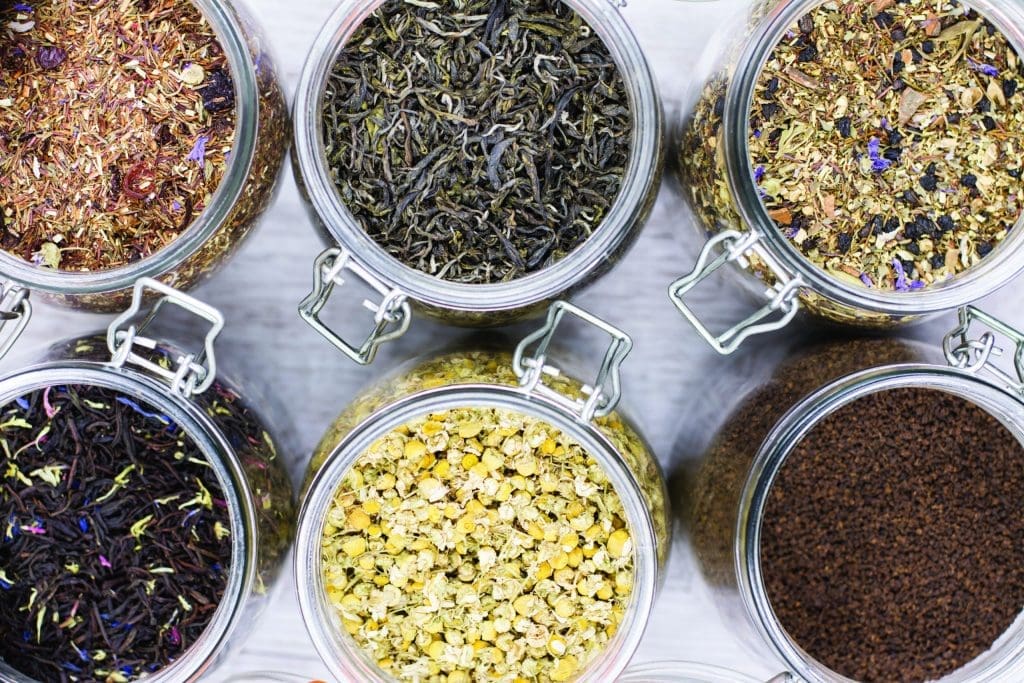
Connoisseurs have their work cut out for them as they explore and recommend the country’s great tradition of local Indian beverages.
Indian states enjoy geographies, climate, and cultural mores that differ in every corner of the country. This has given birth to different types of delicious drinks and beverages made or brewed by people as a part of their meal habits. Made with an eclectic assortment of ingredients these drinks add to the flavourful beverage history of India.
Many local drinks are unique to their states but many have crossed the divide and are equally popular across the country. As a rule, local beverages are made in homes since time immemorial and hold a significant place in the culinary traditions of the state.
Many of these drinks and beverages of India have a history to them, which might be religious importance, seasonal importance, nutritional or cultural significance, etc. Some of these drinks help us cool and relax the body while some of them create warmth and heat up the body to fend off the cold. Most local beverages have significant nutritional values apart from their legendary preparations, colourful presentations, and flavours.
Here is an indian beverages list that includes some of the most popular traditional Indian beverages you must try when travelling the country.
Kahwah – one of the traditional Indian beverages
Kahwah is an aromatic green tea prepared with much care and enjoyed as a traditional and healthy drink by all the Kashmiris in the valley. Prepared by boiling green tea leaves, and adding saffron strands, cardamom, almond silvers, cinnamon bark, and Kashmiri roses, this fragrant amber drink is ideal for the cold weather.
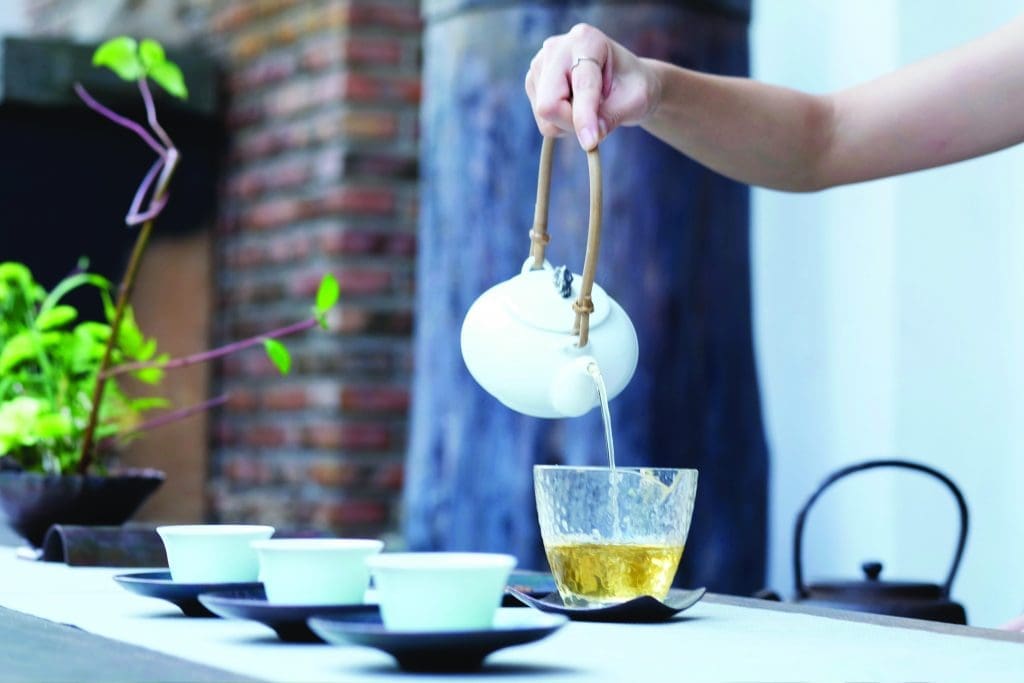
A beautifully designed copper kettle called Samovar is used to pour the hot Kahwah into tiny cups and one has the choice of adding sugar or honey to this fragrant tea.
Lassi – one of the traditional Indian beverages
Lassi is a popular traditional yogurt drink that originated in the Punjab region. It is a blend of yogurt, water, and spices that makes this a popular drink usually for breakfast.
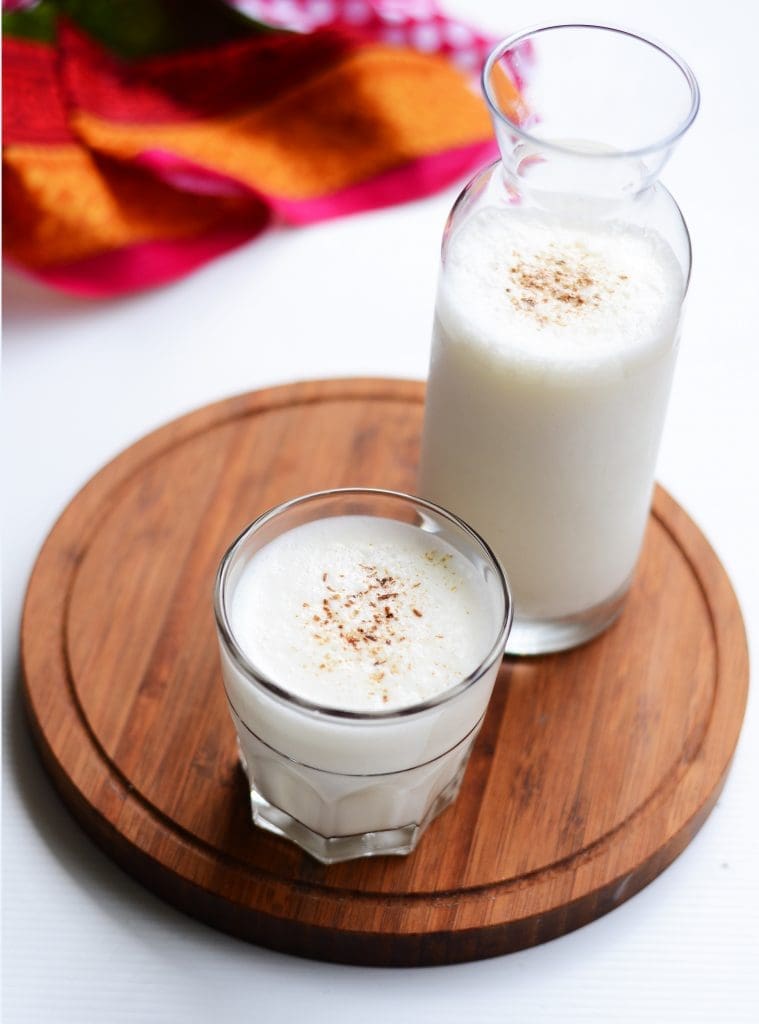
There are many variations to Lassi – a popular, thinner consistency is called chaas. Chaas is also a regional name for buttermilk. the thin, non-fat but rich-tasting liquid left after churning curd to make butter. Buttermilk is full of healthful, delicious cultures that develop naturally and one can have it plain or with a little salt and pepper to taste.
This is also one of the most refreshing summer drinks, which also helps with digestion. In South India the drink is mixed with cilantro, curry leaves, green chile blended into the yogurt mixture. It is called by different names in different states. In Maharashtra, it is called “taak”, while it is referred to as “matha in the Northern States.
When the drink is infused with cannabis it is called ‘bhang’ which is also a very popular drink during festivals in North India. During Holi, this drink is made in abundance. Lassi can either be namkeen (that is a bit towards the saltier side) or sweet which is called mithi lassi. This yogurt-based drink can also be served with blended fruit like mango or with a rose flavour. No wonder it is the most popular cold drink in India,
Thandai – one of the traditional Indian beverages
Thandai is a mixture of almonds, rose petals, poppy seed, pepper, cardamom, saffron, sugar, and milk. The potent mix makes it a powerful energiser, mood enhancer, and gut-friendly. This drink is very popular in Northern India and is associated with Maha Shivratri and Holi. Often the drinks consumed during festivals have ayurvedic benefits to prepare you for a change of season and improve immunity.
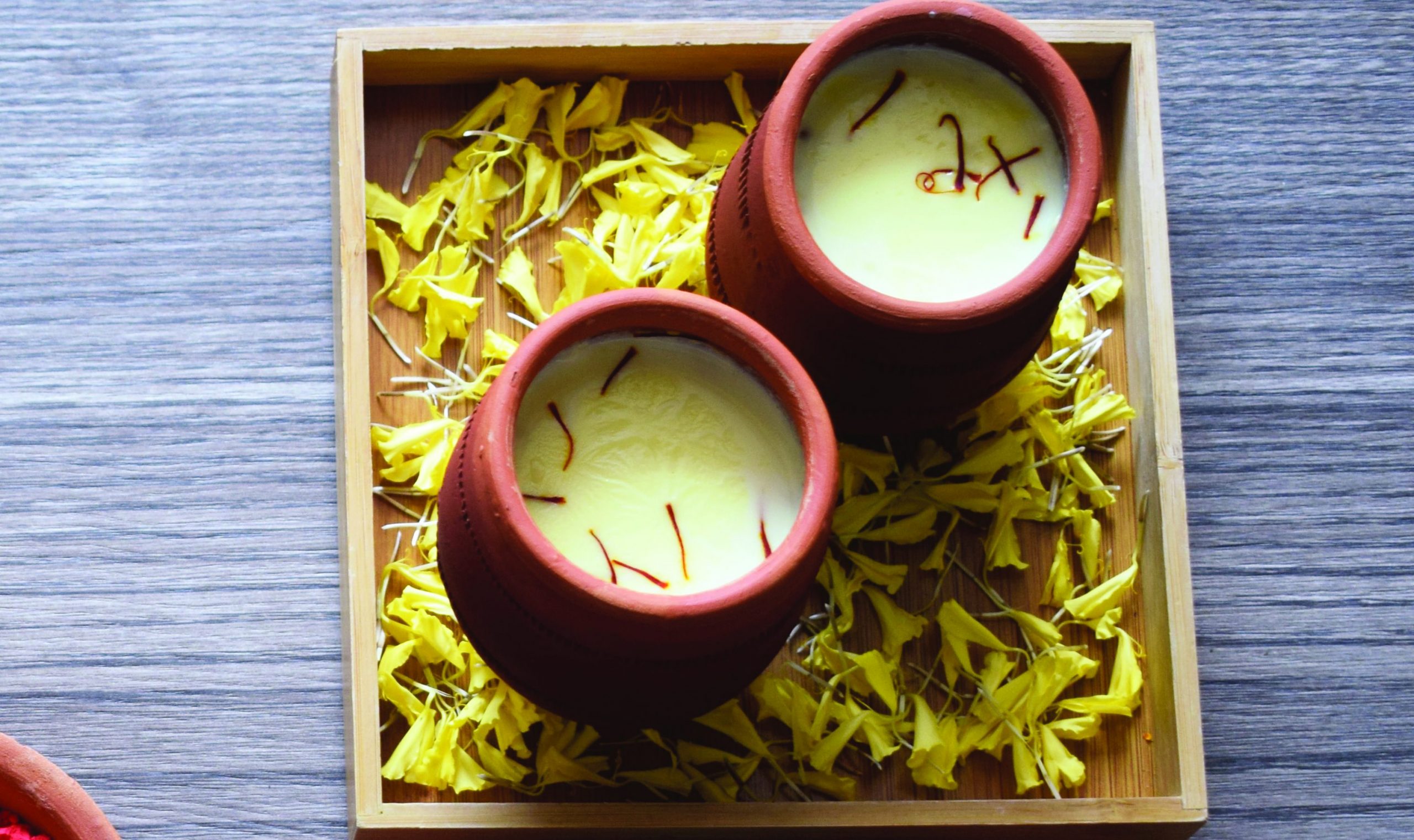
During Holi, a certain variation of the drink is made, by infusing it with cannabis. This is also a form of ‘Bhang’, which is drunk with pleasure by the ones celebrating. With Bhaang people also eat various Indian sweets specially Gujiya. Having thandai is a complete package as it signifies celebrating a festival with your friends and family, eating sweets, and sharing happiness.
Aam Panna – one of the traditional Indian beverages
Aam Panna is a refreshing summer drink. As the name suggests Aam means mango, regarded as the “King of Fruits”. Because the drink is made before the mango ripes, it has a tangy and sweet taste to it. The drink is then mixed with rock salt, sugar, roasted cumin seeds, and mint leaves. It is a very tasty and invigorating drink, energizing the body and adding health benefits too.
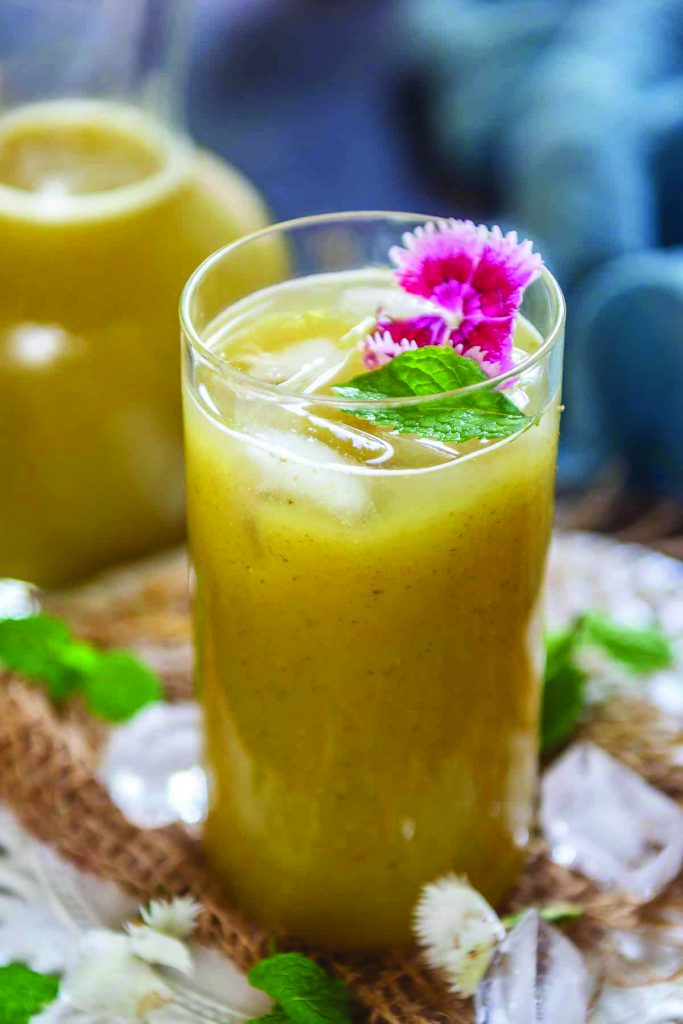
Not only does Aam Panna prevent dehydration, but it also improves digestion. As the drink is prepared from raw mangoes, fresh mint, sugar, salt, and roasted cumin powder, the drink is rich in vitamins, calcium, potassium, magnesium, and iron.
Jal Jeera – one of the traditional Indian beverages
Jal Jeera along with aam paana, is another popular summer drink. The name translates to water and cumin. The beverage is a form of lemonade in which jeera powder is added to the water, along with boondi which adds a bit of crunch and mint leaves for a cooling effect. The chilled drink made of cilantro, mint, a little lime juice, ginger, and spice is popular in north India because of the intense heat, but jal jeera is often used as an appetizer and is much loved by the population.
Toddy – one of the traditional Indian beverages
Toddy is a non-alcoholic and alcoholic beverage that is very popular in coastal areas. Made from the sap of various species of palm trees such as coconut trees, date palms, and palmyra, the sap is tapped from the very sweet trees. At this stage it is non-alcoholic. The toddy or the palm wine from the fresh sap in Goa or Kerala for instance is drunk as neera or padaneer which is sweet, nutritious, and non-alcoholic.
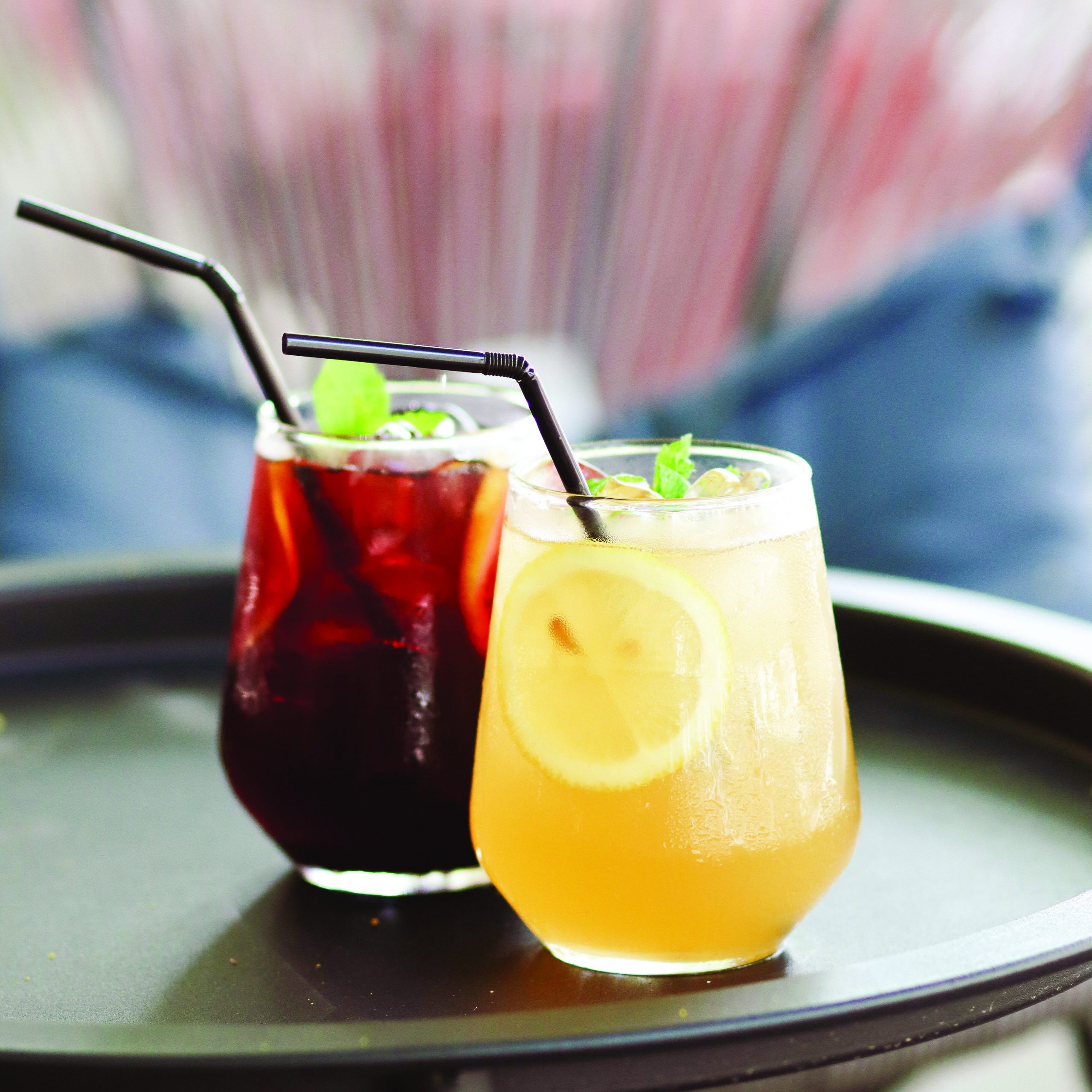
Later it gets fermented by the natural yeast in the air. The alcohol content is around 4 percent. Fermenting for a longer duration gives it a more sour and acidic taste. Toddy is a very old drink, with paintings depicting a farmer tapping the sap from a palm tree.
Historically, tody as an alcoholic drink has its roots in India during the 1600s when it was known as a tārī, or fermented palm sap and served cold. Later In the 1700s, during the colonial era, tārī was accorded a liquor status being made of alcoholic liquor with hot water, sugar, and spices. The drink with variations is often drunk as a hot, invigorating cure-all during cold winter evenings.
Feni/ Fenny – one of the traditional Indian beverages
Feni is a drink that is exclusive only to the state of Goa. The word feni comes from the Sanskrit word phena which means “froth” because of the bubbles that form a light froth.
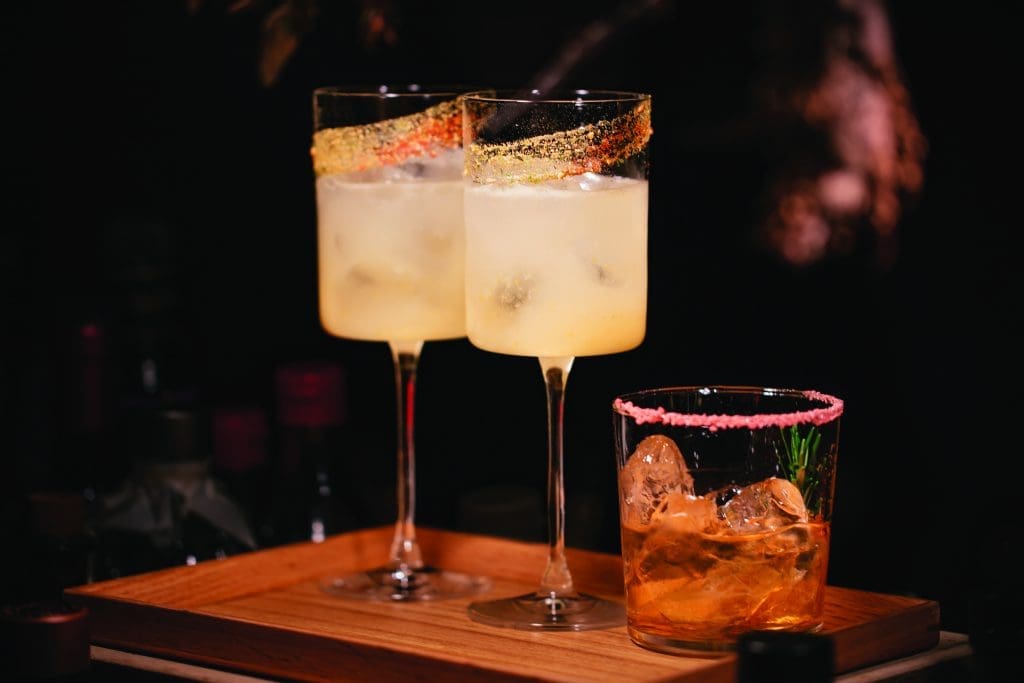
There are two types of Feni – one which is made out of coconuts and the other is made out of cashew apple. The former predates the latter one. Cashew apples were introduced by the Portuguese which became a new source of alcohol. The beverage has a very fruity flavour accompanied by a strong smell.
The alcohol content is 40 – 45 % which is pretty strong and is one of the most popular alcoholic drinks in India. One special feature about the drink is that it doesn’t give the drinker a hangover. Come to Goa to try this 400-year-old heritage drink.
Chai – one of the traditional Indian beverages
If you are a traveller in India, you will be amazed to find a tea stall every 500 meters! Tea is available everywhere. This hot beverage is dear to all Indians. While the drink is found everywhere, the surrounding environment is always unique.
Look around and you will find a hot cup of tea in the hands of locals discussing politics, sports, movies – you name it. A cup of tea brings the inner debater inside of an Indian. You can also drink a variety of chai such as doodh-chai ( milk tea), masala chai, green tea, herbal tea, and many more. For a more eco-friendly and ‘desi’ experience drink it from a kulhad( cup made of clay).
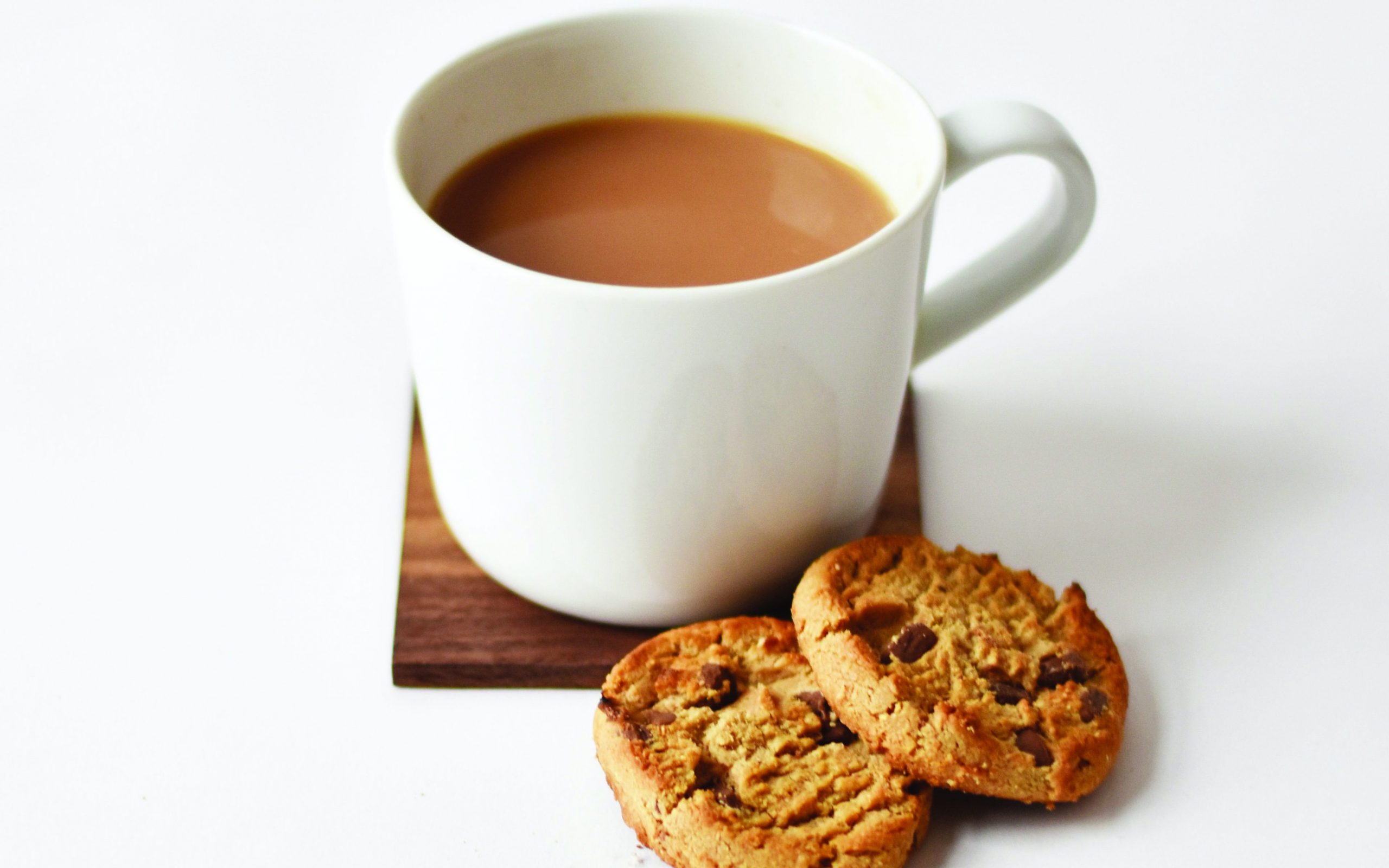
Historically, chai goes back more than 5,000 years, with stories about how a king wanted a hot, healing, spiced beverage prepared. There are many fascinating legends of India’s most loved beverage but sufficient to say chai can be made as you like it when you like it, and as many times as you like it.
Shikanji – one of the traditional Indian beverages
Shikanji is a variation of nimbu paani/ lemonade. The legacy of this drink started in 1937. The Jain shikanji family has been in forefront of serving these tangy lemonade drinks to the country. First established in Modi Nagar each and every dhabha or roadside eatery across the highways of Meerut and Delhi serve this drink. If you are on a road trip in the north Indian belt try this drink when halting for lunch.
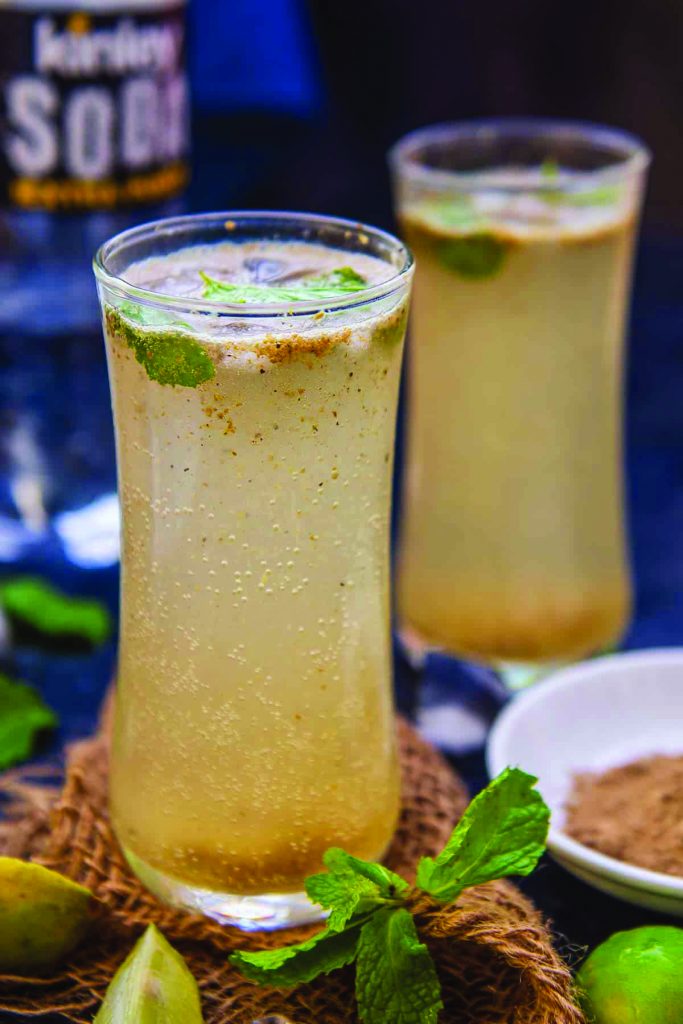
But there’s more. You can get your glass of chilled shikanji garnished with mint leaves and boondi from street handcart sporting giant clay matkas in the early hours of the day. You can spot crowded street corners, where it is a treat to see vendors using old-world shikanji machines.
These legendary machines consist of tall cylindrical vessels containing a steel jar filled with the spice-infused lemon drink. This in turn is surrounded by layers of salted crushed ice to keep it cold, and then the whole is wrapped in red cotton cloth. It is interesting to see the vendor vigorously turning the handle of the tightly shut vessel, causing the shikanji to get to freezing point.
Another innovative and totally quintessential Delhi way of drinking a shikanji is the goli soda – a hand-blended version with a banta or marble to seal the neck of the bottle to retain its soda fizz.
Kokum sherbet – one of the traditional Indian beverages
Kokum Sherbet is a popular exotic drink in the Konkan region. The coastal drink is made by extracting the juice from the Kokum fruit which is also called amsool or sol. Traditionally the drink is made out of kokum juice, sugar, and citrus juice. In states like Goa and Maharashtra, it added to many cocktails for that punch and kick.
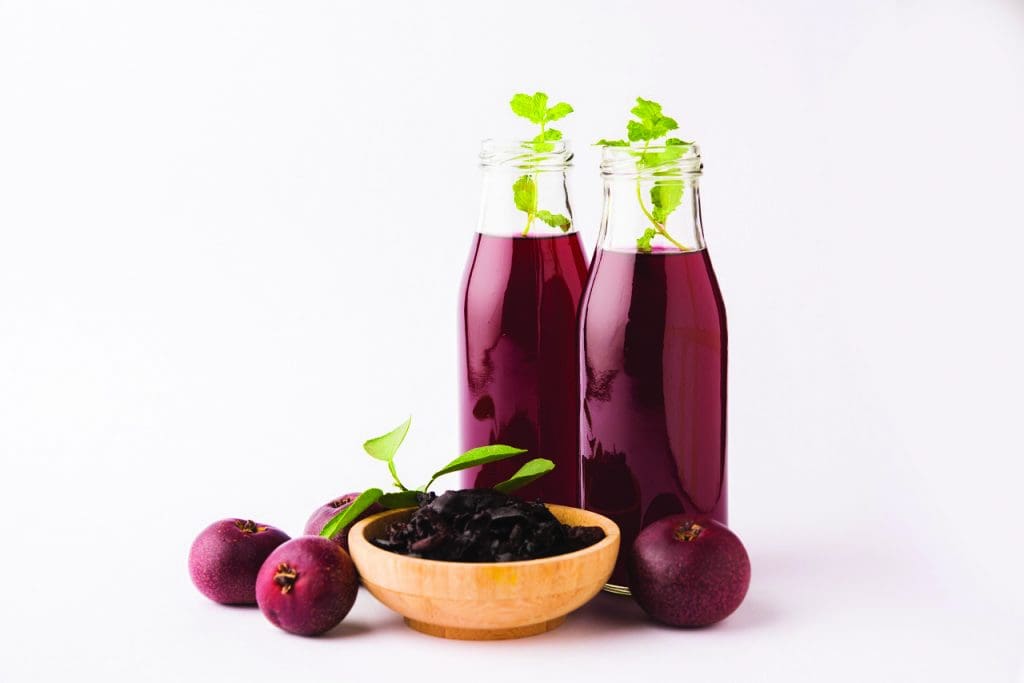
For example, Kokum, roasted cumin, lychee, lime, and gin are mixed together to make a spicy, sweet-sour drink with gin for a burst of flavor. The drink also has many health benefits, as the fruit is a major ingredient in the cosmetic industry for treating rashes, and skin problems.
Sol kadhi is another juice made out of Kokum fruit. The original drink is made without coconut milk, but also includes other ingredients for a different variation. It is very dear to Goan and Malabari cuisine. Kokum in itself has at least five variants of sol kadhi. It is used with just a little coconut to get a dark, violet-pink sol kadhi popular in north Konkan to a blush pink shade near Goa’s border.
Bael Sherbet – one of the traditional Indian beverages
Bael Sherbet the bael fruit is a spiritual, religious, and medicinal plant. Every part from the leaves to the root are used to treat diseases. It is a very nutritious fruit that includes nutrients, vitamins, organic compounds including tannins, calcium, phosphorous, fiber, protein, iron, etc.
To make the juice, the hard outer shell is first cut off and a spoon is used to take out the pulp into a bowl, mash the pulp by hand, add water to it, and continue to mix. The fiber and seeds are strained out of the liquid and poured into a glass. The drink is refrigerated for 30 mins and voila you have a traditionally nutritious local drink.
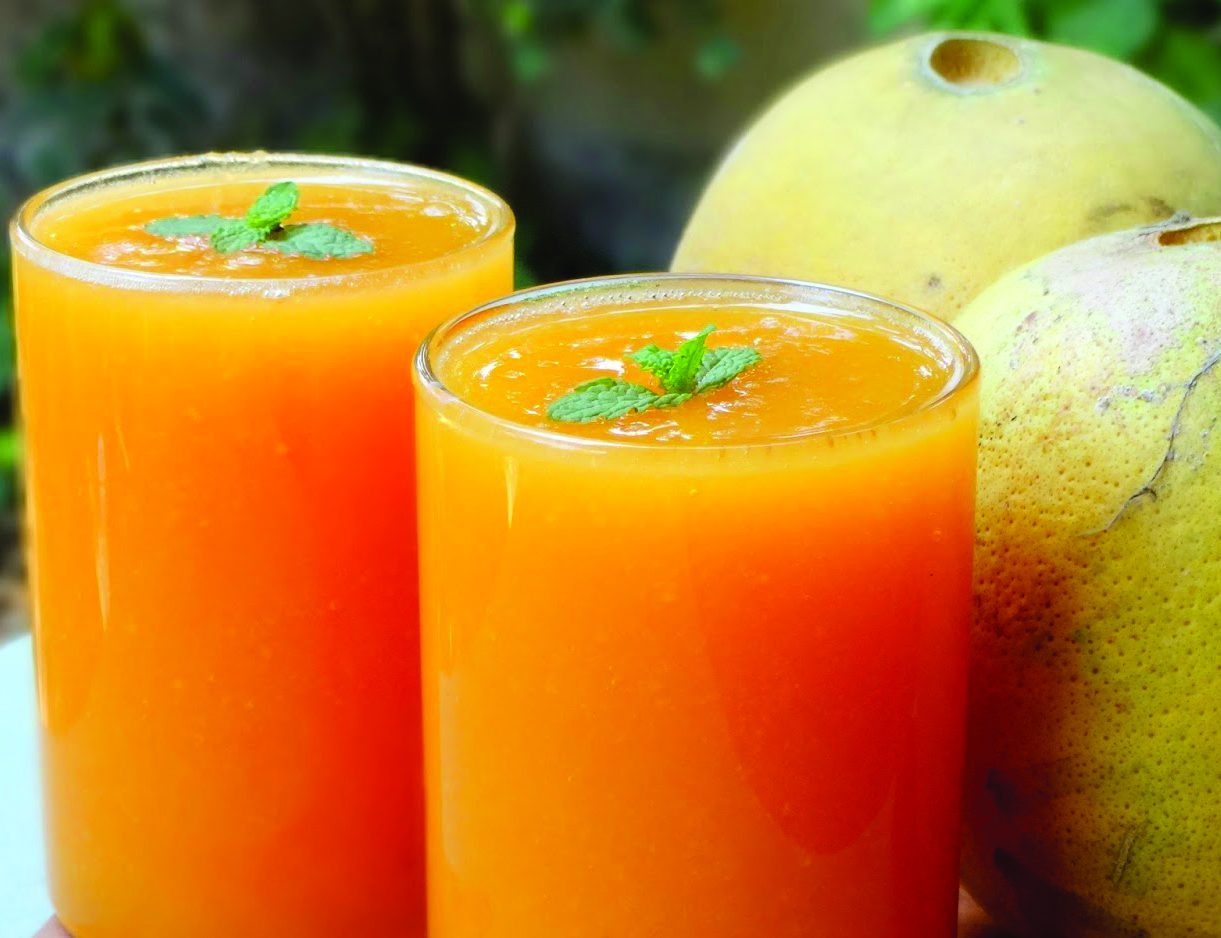
Sattu Sherbet – one of the traditional Indian beverages
Sattu is versatile, nutritious, and a filling ingredient for a great local drink which the Purvanchalis in Bihar have known for centuries.
The sherbet versions are many and all are equally popular – from Bihar’s original Sattu made with roasted ground black chana, bay leaves, and roasted jeera to Bengal’s jober chatu (barley sattu) sherbet, or a sweet dish called pithe, where sattu or chatu is cooked with milk and palm jaggery to the Punjab version where barley and millet flour is added along with jeera, coriander leaves, and black salt.
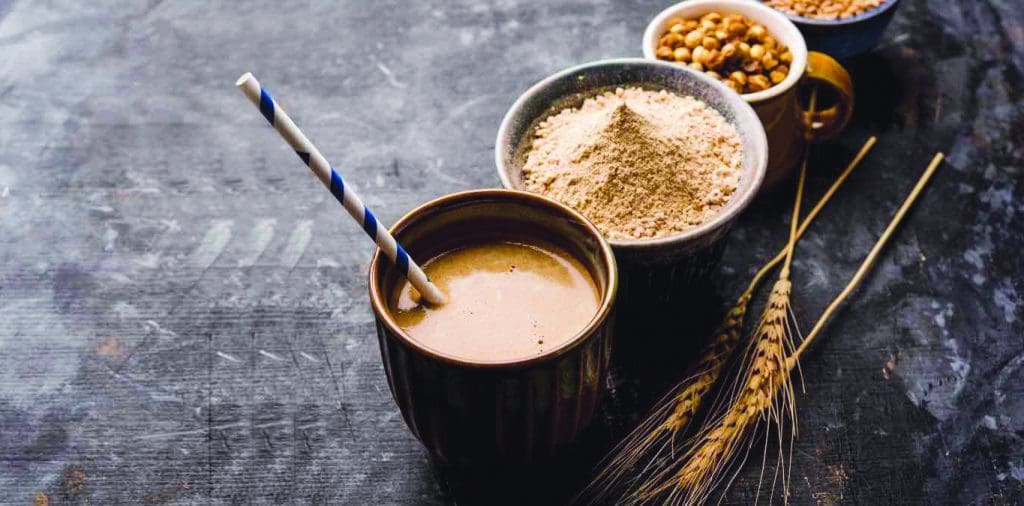
Right now the “sattu shake” has become a favorite protein drink with Instagrammers taking this common local drink and making it their own.
Sattu Sherbet is the simplest beverage and heavy in terms of calories. In case you missed your breakfast and need something energetic sattu sherbet will be at your rescue. It is very easy to make and involves mostly 2 ingredients – Channa powder and water. Traditionally 1-1^1/2 tablespoon of chana powder is added into a glass and the whole is mixed with water. After mixing it well chug down the whole drink and get a burst of energy.
Sattu sherbet has now joined the ilk of superfoods and gourmet stores sell packed units of sattu powder for you to take home and make your own drink.
Read More: Latest



